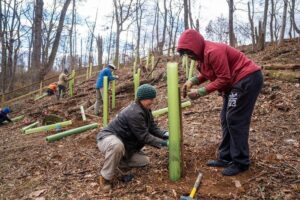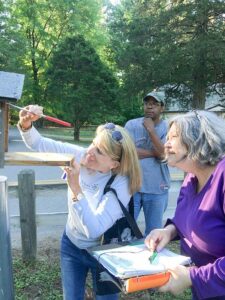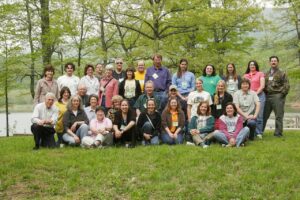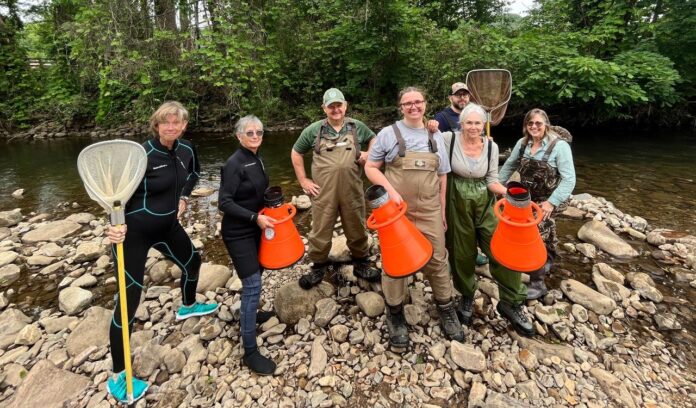Two decades after its start, the Virginia Master Naturalist program continues to empower volunteers to protect and enhance the state’s natural resources.
Launched in 2005 as part of a growing national movement, the Virginia Master Naturalist program trains residents in ecology, wildlife, and environmental stewardship. Operated by Virginia Cooperative Extension and housed in the College of Natural Resources and Environment at Virginia Tech, the program has grown to 30 chapters across the commonwealth.
“The program emerged from a national push to establish Master Naturalist initiatives in every state,” said Michelle Prysby, the program’s director and senior Extension specialist. “A framework was created in 2004 by five state agencies, and Virginia Tech was selected to lead the program.”
Over its first decade, the program rapidly expanded by creating local chapters. Today, the focus is on recruiting and retaining volunteers with many chapters seeing more demand than they can accommodate.
“Chapters typically offer one training per year for about 25 participants, and many have to turn applicants away,” Prysby said.
Volunteers complete a comprehensive training program combining classroom instruction with fieldwork. Topics include ecology, geology, native species, and conservation practices tailored to each chapter’s local environment.
“We have statewide learning objectives, and everyone learns about topics like birds, water, and forests, but about 25 percent of the training is outdoors and locally focused,” Prysby said. “The idea is to connect people with their local ecosystems and projects.”

Lucinda Jennings, a founding member of the New River Valley chapter, has seen the impact of the program.
“I am so proud of being in the first class. From that point on I had made a dozen or so new friends,” she said. “As the chapter has grown substantially, I have really enjoyed meeting new people of all different ages and professions, but we all have a vested interest in our environment.”
In 2024 alone, Virginia Master Naturalist volunteers contributed more than 250,000 hours of service. Their projects included restoring 32 new habitats, improving 821 existing ones, and reaching more than 850,000 people through public education. They also contributed to more than 65 citizen science studies, providing valuable data for land and wildlife management.

Each chapter identifies its own service projects, often in collaboration with one or more of the program’s 700 statewide partners, including nonprofits, schools, libraries, and government agencies.
One example is the Living with Black Bears initiative, a partnership with the Virginia Department of Wildlife Resources. Volunteers are trained to educate the public about minimizing human-bear conflicts, delivering presentations based on community needs.
Water quality is another shared focus. Nearly every chapter participates in monitoring programs, often through partnerships with groups such as the James River Association, the Chesapeake Bay Alliance, or the Virginia Department of Environmental Quality.
Fairfax chapter member Aurora Borghi finds community through her work with the Virginia Master Naturalists.
“Volunteering is something I look forward to every week, and it’s a great way to meet people who share values of environmental stewardship,” she said.
Looking ahead, the program is working to improve access. A new donor-funded pilot allows participants to pay what they can for basic training, helping remove financial barriers.
“My hope is that the program continues to welcome volunteers of all ages and backgrounds,” Prysby said. “Whether someone stays for a short time or for decades, I want every participant to learn something new about nature and find ways to use that knowledge to help their communities and the planet.”

By Chris Moody


